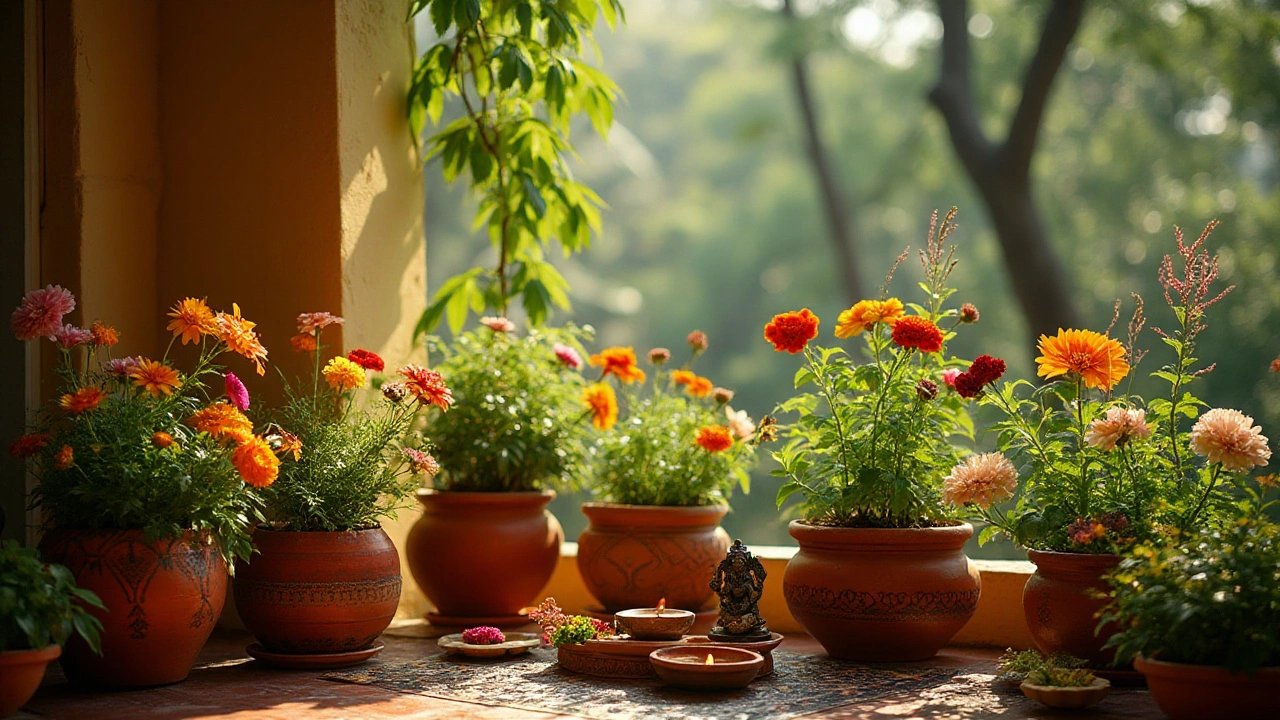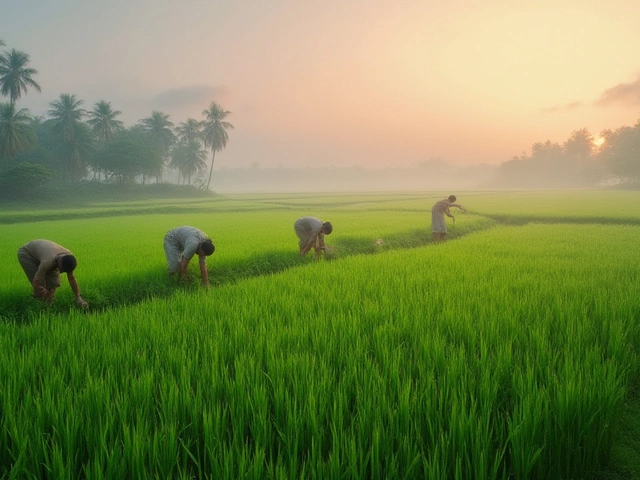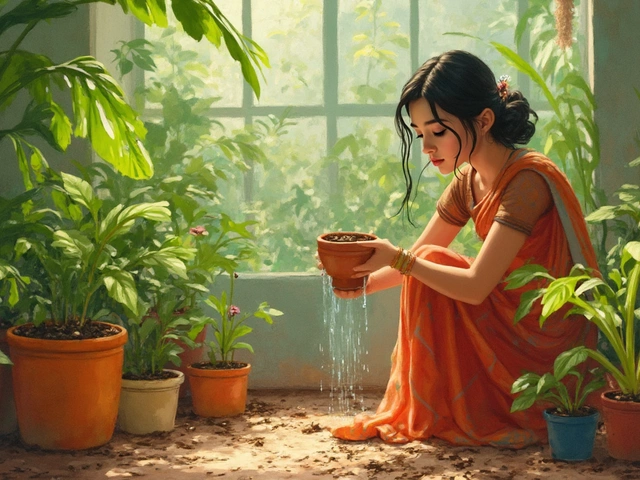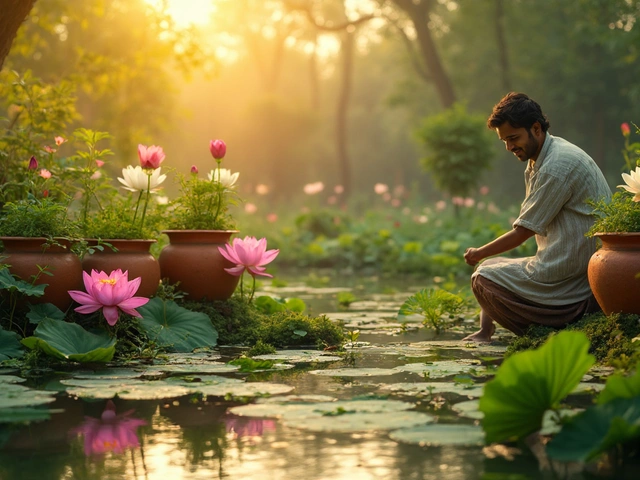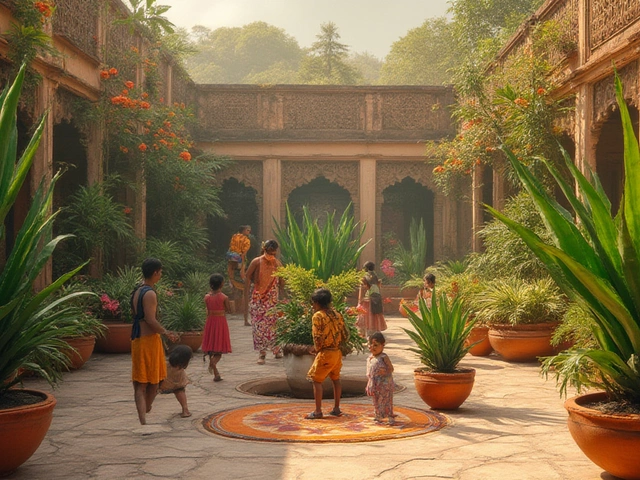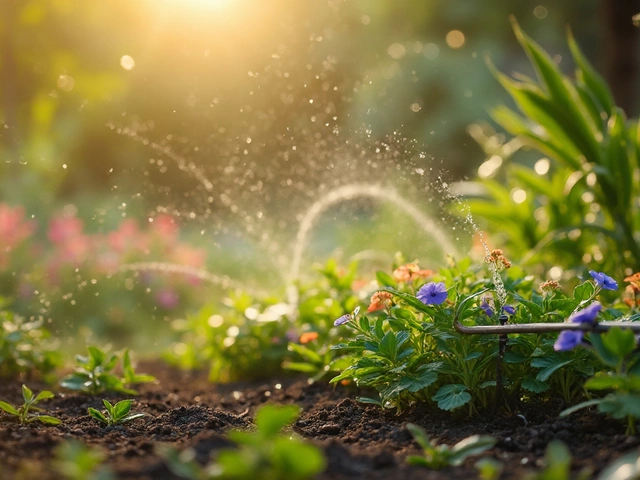Container gardening is a blossoming trend, especially for city dwellers craving a slice of nature in their concrete surroundings. It's the perfect method for transforming small terraces or balconies into verdant sanctuaries, filled with vibrant flora and even tasty herbs. But where do you start?
The heart of successful container gardening lies in a few fundamental principles. From selecting the right containers that suit your plants' growth and aesthetic needs, to ensuring the soil is rich and well-draining, each decision plays a vital role. Knowing how to place your plants to maximize sunlight while ensuring they have just the right amount of water can be the difference between a droopy, sad plant and one that thrives.
In this guide, we'll explore the ins and outs of container gardening, unveiling tips and tricks that cater to both beginner green thumbs and seasoned plant whisperers. Get ready to dive into the world of plants and bring your terrace to life with lush, thriving greenery.
- Choosing the Right Containers
- Soil and Nutrients
- Optimal Plant Selection and Placement
- Watering and Maintenance Techniques
Choosing the Right Containers
Delving into the world of container gardening starts with selecting the appropriate containers—arguably the backbone of your terrace gardening adventure. The choice of container should be guided by both practicality and aesthetics, as it affects plant health, growth, and the visual appeal of your garden.
Material Matters
The material of containers influences everything from weight to heat absorption. Plastic pots, for instance, are lightweight and retain moisture better, making them a great choice for beginners or those living in arid environments. On the other hand, terracotta pots, with their classic look, provide better aeration for the roots but tend to dry out quickly. If you’re looking to add a touch of modernity, metal containers can be appealing but watch out for excessive heat on sunny days.
Drainage Is Key
When it comes to gardening tips, one rule stands paramount: ensure your containers have sufficient drainage. Without proper drainage, roots may become waterlogged, leading to disease or root rot. For containers lacking built-in drainage, consider adding a layer of gravel or stones at the bottom to facilitate water flow.
Size and Shape
Container size should correlate directly to your plant's expected growth. Small pots are excellent for herbs or succulents, while larger varieties might need a sizable container to avoid root constraint. Furthermore, consider the shape; deep containers are ideal for root vegetables, while shallow, wide pots lend themselves well to leafy greens.
Environmental Impact
Choosing sustainable materials such as recycled plastics or biodegradable fiber can help reduce your environmental footprint—a growing consideration in the realm of urban gardening. Some innovative gardeners have even started using repurposed items like old buckets or wooden crates to create rustic, eco-friendly plant homes.
Container Selection at a Glance
| Container Type | Best Uses | Pros | Cons |
|---|---|---|---|
| Plastic | Versatile, all purposes | Lightweight, moisture retention | May wear over time |
| Terracotta | Classic choice | Good aeration | Prone to drying out |
| Metal | Modern aesthetics | Durable | Can heat up quickly |
By paying close attention to these container characteristics, you can create an inviting and thriving urban gardening space that not only flourishes but also radiates style and sustainability.
Soil and Nutrients
The foundation of healthy container gardening lies in understanding and optimizing the soil and nutrients your plants require. Unlike traditional gardening, the soil in containers must meet specific criteria to support thriving plant life. Let's delve into how to cultivate the perfect environment for your terrace gardening adventure.
Choosing the Right Soil Mix
A common misconception is that regular garden soil is suitable for containers. However, unlike ground soil, container soil needs to be lightweight and well-draining. Begin with a high-quality potting mix, which is specially formulated for container gardening. These mixes typically contain peat moss, perlite, and vermiculite, providing a balance of moisture retention and aeration.
The Benefits of Organic Matter
Incorporating organic matter, like compost or well-rotted manure, can significantly enhance your soil’s fertility. This addition increases the nutrient content and helps maintain a healthy ecosystem within your pots. Furthermore, organic matter aids in the soil's ability to hold moisture without becoming waterlogged, a key factor for urban gardening.
Feeding Your Plants: Nutrient Boosters
Plants in containers are limited in their ability to draw nutrients from the surrounding environment, making regular feeding essential. Here's how you can ensure your plants receive the nutrients they crave:
- Use a slow-release granular fertilizer mixed into the soil at planting time. This will provide your plants with a steady supply of nutrients as they grow.
- Supplement with liquid fertilizers every month or according to the specific needs of your plant varieties. This can give an instant nutrient boost, especially during the growing season.
- Consider organic options such as fish emulsion or seaweed extract to encourage strong root development and vibrant foliage.
One of the most rewarding aspects of container gardening is the ability to tailor soil conditions precisely to each plant’s needs. Don't hesitate to experiment and adjust the nutrient regimen as your green companions evolve.
A Tip: Testing and Monitoring
Regularly test your soil for pH and nutrient levels to prevent deficiencies that could stunt plant growth. Most plants prefer a slightly acidic to neutral pH (between 6.0 and 7.0). Keep an eye on your plants' appearance; yellowed leaves might indicate a nitrogen deficiency, while purpling can signal a lack of phosphorus.
By thoughtfully crafting the soil and ensuring the right balance of nutrients, your container garden will not only thrive but also become a testament to nature's resilience, even in the most urban of settings.
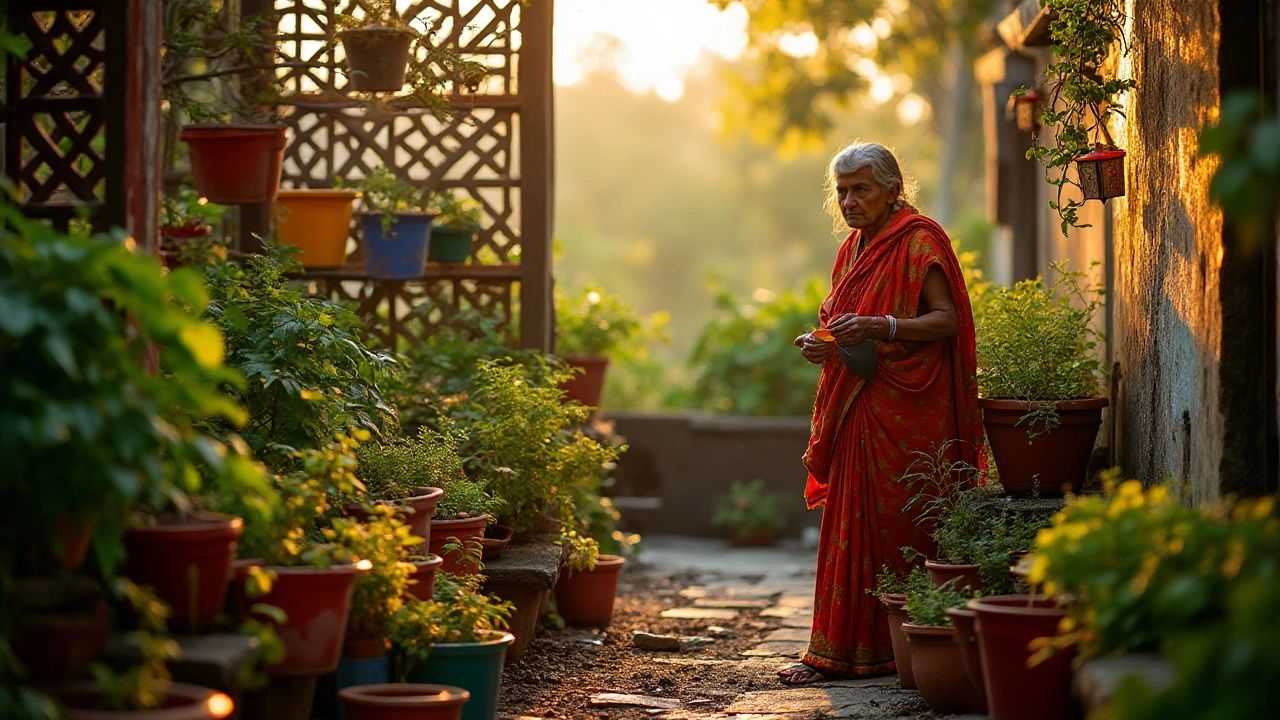
Optimal Plant Selection and Placement
Choosing the right plants for your container gardening project is akin to selecting the perfect cast for a play; each plant must harmonize with others and the environment to thrive. Start by understanding your terrace's unique microclimate. Does it bask in full sunlight, or is it tucked away in the shade for most of the day? Light conditions dictate what plants will flourish.
Understanding Light Requirements
Sun-loving plants like cherry tomatoes, lavender, and basil need at least six hours of direct sunlight each day. In contrast, shade-tolerant options such as ferns, hostas, and begonias thrive in lower light conditions. Observe how the sun moves across your terrace and plan accordingly—strategic placement can maximize exposure for sun lovers while preserving cooler corners for shade dwellers.
Height, Spread, and Compatibility
Another critical factor in plant selection is size. Every plant has potential height and spread, impacting how much space they'll occupy. Taller plants like sunflowers or dwarf fruit trees should be placed in the back or center, allowing shorter species like petunias or lettuces to access sunlight without obstruction. Mixing plants with varied heights not only maximizes the available space but also adds visual interest.
- Begin with a focal plant, typically a taller species.
- Surround with medium-height plants that complement in color and texture.
- Finish with trailing plants like ivy or sweet potato vines on the edge to spill over the container.
Harmonious Pairings
Plants, much like people, have their preferred companions. Companion planting enhances growth, boosts flavors, and can even ward off pests. Pair tomatoes with basil, a classic combo that improves both taste and growth vigor. Similarly, marigolds can protect leafy greens from harmful insects thanks to their natural pesticide properties.
For those hesitating over selection, consider these versatile heroes: succulents for low maintenance and impressive drought resistance, or herbs such as mint and thyme that provide culinary and aromatic delight.
Whether your goal is a lush retreat or a small kitchen garden, mindful plant selection and thoughtful placement create a terrace gardening paradise.
| Plant | Light Requirement | Growth Habit |
|---|---|---|
| Cherry Tomato | Full Sun | Vine |
| Lavender | Full Sun | Perennial Shrub |
| Fern | Shade | Deciduous |
| Hosta | Shade | Herbaceous |
Watering and Maintenance Techniques
Watering is the lifeline of any garden, but when it comes to container gardening, the stakes are a bit higher. Plants in pots tend to dry out more quickly than their in-ground counterparts, making watering both an art and a science.
Understanding Watering Needs
A general rule of thumb is to water when the top inch of soil feels dry to the touch. Since terrace gardens can be subject to direct sun and wind exposure, check moisture levels regularly. Over-watering is as risky as under-watering; too much moisture can suffocate roots and lead to rot.
Watering Strategies
- Morning Routine: Water your plants early in the morning. This provides moisture to face the day’s heat and reduces evaporation loss.
- Drip Irrigation: Consider using a drip irrigation system or self-watering pots. These can help maintain consistent moisture levels without the risk of over-saturation.
- Right Amount: Ensure water flows out of the drainage holes—this indicates that the entire root ball is being moistened.
Maintenance Made Easy
While watering is crucial, maintenance involves several key practices that keep your terrace garden healthy and thriving.
Regular Inspection
Conduct regular inspections for signs of disease, pests, or stress. Use natural pest control methods, such as neem oil or insecticidal soap, to address issues promptly.
Pruning and Deadheading
Pruning encourages your plants to grow fuller and prevents diseases. Also, remove any dead or wilted flowers (a process known as deadheading) to stimulate new blooms.
Fertilization
Potted plants deplete soil nutrients quickly, so regular fertilization is a must. An organic, slow-release fertilizer can replenish essential nutrients without overwhelming plants.
| Frequency | Task |
|---|---|
| Weekly | Water deeply and inspect for pests |
| Monthly | Apply fertilizer and prune as necessary |
| Quarterly | Renew topsoil and inspect drainage systems |
In the end, successful terrace gardening comes down to attentive care and understanding your plants' needs. With the right watering and maintenance, your container garden can become a lush, living testament to your dedication and skill.
